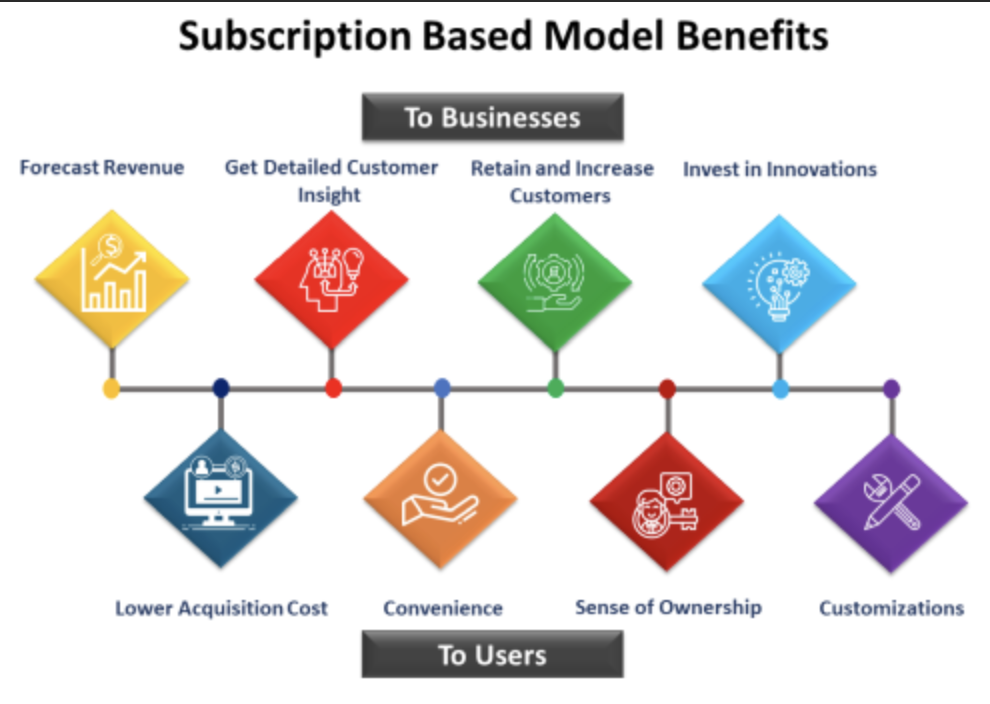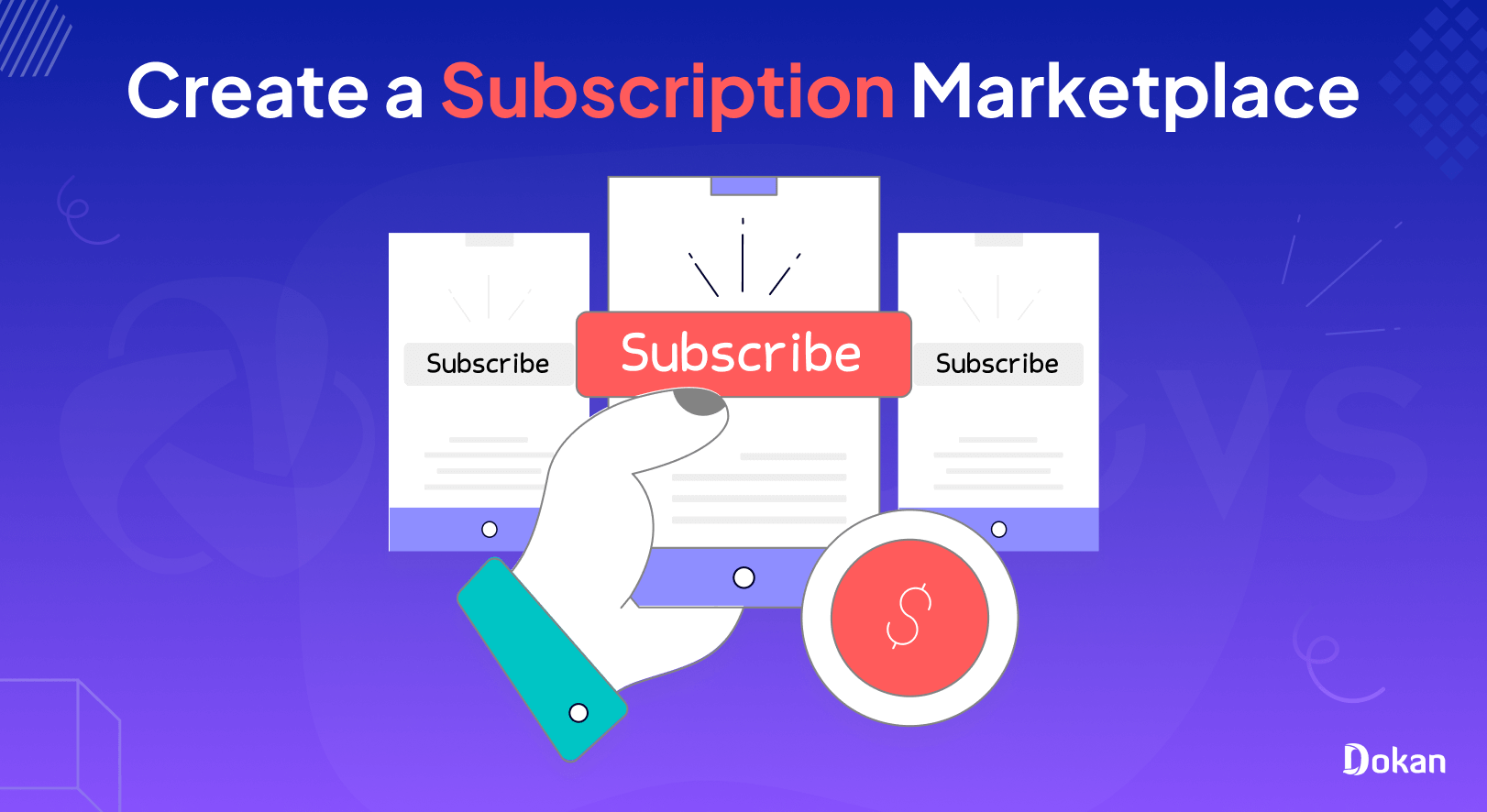In recent years, subscription-based business models have exploded in popularity across industries—from streaming services like Netflix and Spotify to subscription boxes for beauty products and meal kits. The appeal of this model lies in its potential for consistent, predictable revenue and long-term customer relationships. If you’re considering starting an online business, a subscription model could be a highly lucrative path.
This beginner’s guide will walk you through everything you need to know to build a successful subscription-based online business, covering the key steps, common challenges, and strategies for success.
Table of Contents:
- Understanding the Subscription-Based Business Model
- Benefits of a Subscription-Based Online Business
- Types of Subscription Models
- Steps to Building Your Subscription-Based Business
- Marketing Your Subscription Service
- Managing Customer Relationships and Retention
- Scaling Your Subscription Business
- Conclusion

1. Understanding the Subscription-Based Business Model
A subscription-based business model offers customers access to products or services on a recurring basis (e.g., monthly, quarterly, annually) in exchange for a fee. The key difference between this and traditional business models is that customers pay regularly to maintain ongoing access, rather than making one-time purchases.
This model is especially well-suited for online businesses, as it allows you to provide continuous value to customers, either through digital products (like software or content) or physical goods (like subscription boxes).
2. Benefits of a Subscription-Based Online Business
A. Predictable Revenue
One of the most significant advantages of the subscription model is predictable, recurring revenue. This steady cash flow allows you to better forecast earnings, manage resources, and invest in business growth.
B. Customer Retention
Subscription models are excellent for building long-term customer relationships. With recurring billing, you don’t need to constantly chase new customers—your existing subscribers provide ongoing revenue. Retaining a customer for the long term often costs less than acquiring a new one.
C. Scalability
Once you’ve established a strong product or service offering, scaling becomes easier in a subscription model. For digital products, especially, adding more subscribers doesn’t significantly increase costs, allowing for substantial profitability as you grow.
D. Data-Driven Decisions
Subscription businesses can collect valuable data about customer behavior, preferences, and trends. This data can help you optimize your offering, personalize experiences, and drive retention.

How To Write An Effective Sales Letter For Your Membership Site ![]()

3. Types of Subscription Models
There are several types o
f subscription models to choose from, depending on the type of business you want to build. Here are a few popular ones:
A. Subscription Boxes
Subscription box businesses deliver curated packages of physical product
s to customers regularly. Examples include beauty products (Birchbox), snacks (Graze), or even clothing (Stitch Fix).
B. Software as a Service (SaaS)
In this model, customers subscribe to access cloud-based software or online tools. SaaS businesses like Dropbox or Canva offer tiered pricing for different features or usage levels.
C. Membership Sites
Membership-based businesses provide exclusive access to digital content or communities. For example, online learning platforms like MasterClass or fitness communities offer subscription plans for access to courses and resources.
D. Content Subscriptions
Businesses like news platforms (e.g., The New York Times) or media services (e.g., Netflix, Spotify) offer access to premium content via subscription. Subscribers pay a recurring fee to enjoy content without ads or with premium features.
E. Product Replenishment
These services automatically ship essential goods—like shaving razors (Dollar Shave Club) or vitamins (Care/of)—on a set schedule, ensuring customers never run out of what they need.
4. Steps to Building Your Subscription-Based Business
Building a subscription-based online business involves careful planning and execution. Here’s a step-by-step guide to get you started:
Step 1: Identify Your Niche and Value Proposition
Your first task is to decide on the niche market you want to serve. Whether you’re offering a physical product, digital content, or a service, your subscription must provide real value to your audience. Ask yourself:
- What problems can you solve for customers on an ongoing basis?
- What unique experience or product can you offer that keeps customers coming back?
Example: If you’re passionate about wellness, you could offer a monthly subscription box with curated natural skincare products or supplements.
Step 2: Choose Your Subscription Model
Based on your niche, decide which type of subscription model (e.g., SaaS, subscription box, membership site) best aligns with your business. Consider your audience’s preferences and the type of product or service that fits well with recurring billing.
Step 3: Plan Your Product or Service
Once you’ve chosen a model, outline your offering in detail. If you’re starting a subscription box, determine the types of products you’ll source and how you’ll curate them each month. For digital services, decide on the features and benefits of your membership or software plan.
Consider factors like:
- Sourcing products (for physical goods).
- Creating or licensing content (for digital products).
- Managing inventory, if applicable.
Step 4: Set Pricing Tiers
Pricing can make or break your subscription business. Research competitors in your space and set pricing tiers that reflect the value you’re offering while still remaining attractive to customers.
Common strategies include:
- Tiered pricing: Offer multiple subscription levels (basic, premium) with increasing benefits.
- Freemium model: Provide basic access for free and charge for premium features.
- Discounted annual subscriptions: Encourage long-term commitments by offering discounts for yearly plans.
Example: A fitness app might offer a free tier with limited features and a premium subscription with full access to all workout plans.
Step 5: Develop Your Website or Platform
Your website will be the central hub for managing subscriptions, so it’s important to have a user-friendly, professional-looking platform. Ensure that customers can easily:
- Sign up for subscriptions.
- Manage their accounts (e.g., upgrading/downgrading plans, canceling).
- Make payments securely.
Tools to Consider: Shopify (for physical goods), WooCommerce Subscriptions (for WordPress-based websites), or subscription management platforms like Chargebee or Recurly.
Step 6: Implement Payment and Billing Systems
A reliable payment system is essential for processing recurring transactions. Choose a payment processor that supports subscription billing, such as Stripe, PayPal, or Square. Ensure that your platform can handle automated billing, sending invoices, and managing renewals.
5. Marketing Your Subscription Service
Once your subscription-based business is set up, the next step is marketing to attract subscribers. Here are some strategies to help you grow:
A. Build a Pre-Launch Email List
Before launching, start building an email list of interested prospects. Offer incentives like early-bird discounts or free trials to encourage sign-ups.
B. Use Social Media
Social media is a powerful tool for generating buzz and promoting your subscription service. Create content that showcases the benefits of your product or service, including behind-the-scenes insights, unboxings, or customer testimonials.
C. Content Marketing
Create valuable content (e.g., blogs, videos, podcasts) that educates your audience and positions your business as an authority in your niche. By offering helpful information, you build trust and encourage visitors to subscribe.
D. Influencer Partnerships
Partner with influencers or bloggers in your industry to review your subscription service. Unboxing videos, product demos, or tutorials can help you reach a broader audience and drive more sign-ups.
E. Paid Advertising
Consider running ads on platforms like Facebook, Instagram, or Google to target your ideal customers. Use compelling offers, such as discounts for new subscribers, to encourage conversions.
6. Managing Customer Relationships and Retention
Retention is just as important as acquisition when it comes to subscription businesses. Here’s how to keep your subscribers happy:
A. Provide Consistent Value
The key to long-term retention is consistently delivering value. Whether it’s offering high-quality products or exclusive content, ensure that your subscribers feel they’re getting more than they pay for.
B. Offer Personalization
Customers appreciate tailored experiences. Use customer data to personalize product recommendations, content suggestions, or offers to make your subscribers feel valued.
C. Regular Communication
Stay in touch with your subscribers via email or in-app messages. Update them on new features, upcoming shipments, or special promotions. Keeping the lines of communication open helps build a sense of community and loyalty.
D. Manage Churn Proactively
Customer churn is inevitable, but you can reduce it by monitoring why customers leave. Offer incentives to canceling subscribers, such as a discount or pause option. Follow up with exit surveys to gather feedback and improve your service.

one month to your own online business![]()

7. Scaling Your Subscription Business
As your subscription-based business grows, you’ll want to scale your operations to meet demand. Here are some strategies:
A. Invest in Automation
Use tools to automate routine tasks like billing, renewals, and customer service. Automation frees up time and ensures a smooth experience for your subscribers.
B. Expand Your Product Line
Once you’ve established a solid customer base, consider offering additional products, services, or subscription tiers. Expanding your product line gives your subscribers more choices and can boost revenue.
C. Focus on Referrals
Encourage existing subscribers to refer friends or family by offering referral bonuses or discounts. A strong referral program can help you scale without heavy investment in advertising.
D. Monitor Key Metrics
Track important metrics like customer acquisition cost (CAC), lifetime value (LTV), churn rate, and average revenue per user (ARPU). These numbers provide insights into the health of your business and help you make data-driven decisions for growth.
8. Conclusion
Building a subscription-based online business offers an incredible opportunity for predictable revenue, long-term customer relationships, and scalable growth. By choosing the right niche, providing continuous value, and leveraging smart marketing strategies, you can create a thriving subscription service that keeps customers engaged and excited.
Whether you’re planning to offer digital services, physical products, or exclusive content, this beginner’s guide provides the foundation you need to get started. Take the time to carefully plan, execute, and iterate as your business grows to ensure lasting success.





Leave a Reply